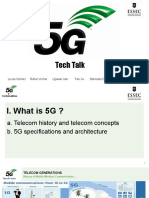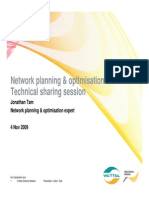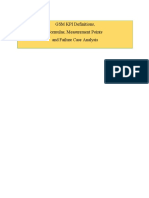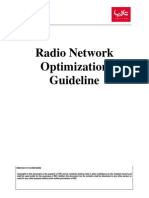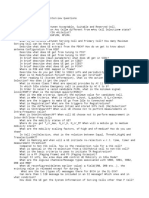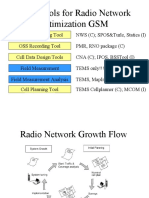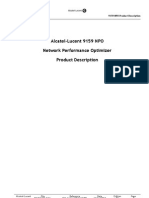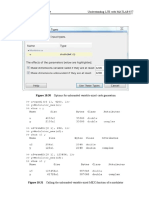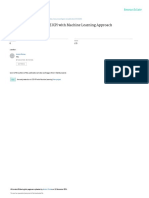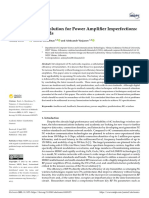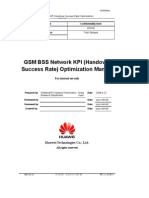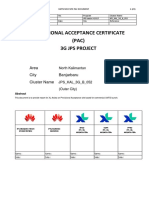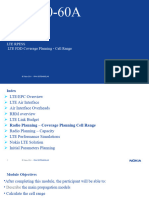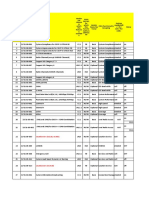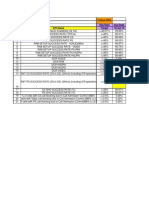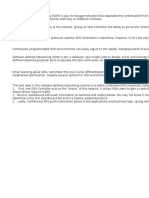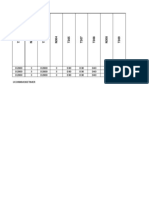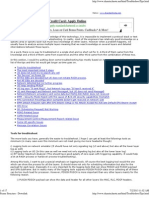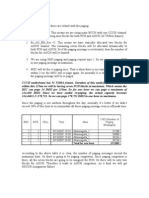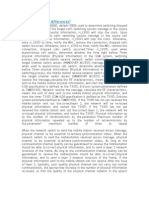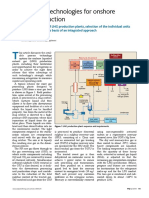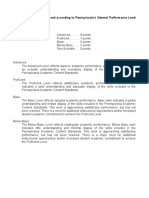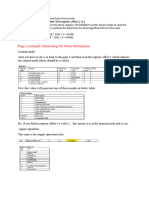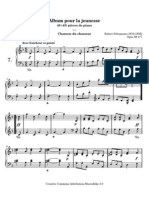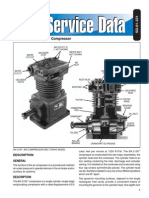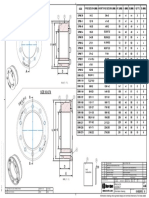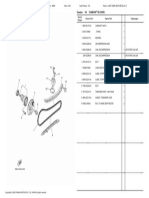Model Tuning Report
NOKIA RNP Team
PT.Nokia Solutions and Networks, April 2015
Revision History
Date
Revision No.
Description
Author
��Contents
1
Introduction ........................................................................................................... 6
1.1
Model Tuning Process ............................................................................................. 6
1.2
Model Tuning Objectives ......................................................................................... 6
1.3
Digital Map .............................................................................................................. 6
1.4
Propagation Model Definition................................................................................... 8
1.4.1
Propagation environments ....................................................................................... 8
1.4.2
Standard Propagation Model ................................................................................... 8
Site Selection and Route Planning Process ........................................................ 10
2.1
RF Measurement..................................................................................................... 10
2.2
Site Selection .......................................................................................................... 10
2.3
Site survey .............................................................................................................. 12
2.4
CW Test route ......................................................................................................... 12
Model Calibration .................................................................................................. 13
3.1
Introduce ................................................................................................................. 13
3.2
Model for Dense Urban ........................................................................................... 13
3.2.1
Analysis CW Test Data for Dense Urban ................................................................. 13
3.2.2
Model Tuning Result for Dense Urban ..................................................................... 23
3.3
Model for Urban....................................................................................................... 24
3.3.1
Analysis CW Test Data for Urban ............................................................................ 24
3.3.2
Model Tuning Result for Urban ................................................................................ 34
3.4
Model for Sub Urban ............................................................................................... 35
3.4.1
Analysis CW Test Data for Sub Urban ..................................................................... 35
3.4.2
Model Tuning Result for Sub Urban......................................................................... 43
3.5
Model for Rural ........................................................................................................ 44
3.5.1
Analysis CW Test Data for Rural ............................................................................. 44
3.5.2
Model Tuning Result for Rural ................................................................................. 50
4. LTE Propagation Model of Jakarta................................................................................. 51
�Figures
Figure 1-1 clutter plot of Jakarta ................................................................................................... 7
Figure 2-1 Rooftop antenna clearance ....................................................................................... 11
Figure 3-1 CW Signal Strength plot Dense Urban ...................................................................... 13
Figure 3-2 signal Strength vs 10 log (d) before filter UOB .......................................................... 14
Figure 3-3 signal Strength vs 10 log (d) before filter Mandiri ...................................................... 15
Figure 3-4 signal Strength vs 10 log (d) before filter PPHUI ....................................................... 16
Figure 3-5 signal Strength vs 10 log (d) before filter Resto Paregu ............................................ 17
Figure 3-6 Dense Urban DT Data process ................................................................................. 18
Figure 3-7 Signal strength vs log (d) after filter UOB .................................................................. 19
Figure 3-8 Signal strength vs log (d) after filter Mandiri .............................................................. 20
Figure 3-9 Signal strength vs log (d) after filter PPHUI ............................................................... 21
Figure 3-10`Signal strength vs log (d) after filter Resto Paregu .................................................. 22
Figure 3-11 CW Signal Strength plot Urban ............................................................................... 24
Figure 3-12 signal Strength vs 10 log (d) before filter Salon JLO................................................ 25
Figure 3-13 signal Strength vs 10 log (d) before filter Kemang Selatan ...................................... 26
Figure 3-14 signal Strength vs 10 log (d) before filter Cementaid ............................................... 27
Figure 3-15 signal Strength vs 10 log (d) before filter Ruko Artha KEdoya ................................. 28
Figure 3-16 Urban DT Data process .......................................................................................... 29
Figure 3-17 Signal strength vs log (d) after filter Salon JLO ....................................................... 30
Figure 3-18 Signal strength vs log (d) after filter Kemang Selatan .............................................. 31
Figure 3-19 Signal strength vs log (d) after filter Cementaid ....................................................... 32
Figure 3-20 Signal strength vs log (d) after filter Ruko Artha Kedoya ......................................... 33
Figure 3-21 CW Signal Strength plot Sub Urban ........................................................................ 35
Figure 3-22 signal Strength vs 10 log (d) before filter Primagama .............................................. 36
Figure 3-23 signal Strength vs 10 log (d) before filter Bina Asih ................................................. 37
Figure 3-24 signal Strength vs 10 log (d) before filter Perkutut ................................................... 38
Figure 3-25 Sub Urban DT Data process ................................................................................... 39
Figure 3-26 Signal strength vs log (d) after filter Primagama ...................................................... 40
Figure 3-27 Signal strength vs log (d) after filter Bina Asih ......................................................... 41
Figure 3-28 Signal strength vs log (d) after filter Perkutut ........................................................... 42
Figure 3-29 CW Signal Strength plot Rural ................................................................................ 44
Figure 3-30 signal Strength vs 10 log (d) before Rangon Jaya ................................................... 45
Figure 3-31 signal Strength vs 10 log (d) before filter Sukatani .................................................. 46
Figure 3-32 Rural DT Data process............................................................................................ 47
Figure 3-33 Signal strength vs log (d) after filter Rangon Jaya ................................................... 48
Figure 3-34 Signal strength vs log (d) after filter Sukatani .......................................................... 49
�Tables
Table 1-1 Clutter Classification scheme ....................................................................................... 8
Table 2-1 List of selected CW test for Jakarta ............................................................................ 11
Table 3-1Test Point count of each site Dense urban .................................................................. 14
Table 3-2Test Point count of each site Urban............................................................................. 24
Table 3-3Test Point count of each site Sub Urban ..................................................................... 35
Table 3-4Test Point count of each site Rural .............................................................................. 44
Table 4-1 Final Propagation Model tuning result of Jakarta ........................................................ 51
�1 Introduction
Propagation model Tuning is a crucial procedure early in network Deployment as it enables
accurate predictions of coverage and interference. The objective of this document is to describe
the CW drive campaign and the propagation model tuning procedure for smartfren FDD 850
project in Jakarta of Indonesia. Here we do CW test and propagation model tuning base on FDD
850 MHz, and for LTE propagation model was calculated depend on tuned Standard Propagation
Model.
Anite Nemo Scanner and Coyote used to data process and Atoll (version : 3.2.1.7090) for model
tuning Maps & Clutters
1.1
Model Tuning Process
The model tuning process including the following activities:
Define models required to simulate coverage of different physical environments
Site survey to find suitable sites for each environment
Clearance Scanning
Equipment and testing
CW test and data collection
Assessment and preparation data
Model tuning for each environment
Validate the model
1.2 Model Tuning Objectives
The propagation models included in this investigation refers to dense urban, urban, sub urban,
and rural area.
The following were used as objectives throughout the process:
Mean error between -1 and 1 dB in global calculation each clutter
Standard Deviation error <= 8 dB in global calculation each clutter
1.3 Digital Map
Mapping Data is an integral component in prediction calculations and thus accurate data is
essential for any prediction model to function correctly. It is important that mapping data supplied
is as up to date as possible so that it reflect any recent changes in land use.
�Digital Terrain Map
All measurement data was resolved using a 20 m resolution Digital Terrain Map. The vintage of
the map used was Indonesia: West Java, Map 20m, January 15th 2015 from Computa Maps
Company. Universal transverse Mercator co-ordinate system with zone 48s and datum WGS84
is used
Clutter Database
The clutter data classes used for the Jakarta model tuning campaign are listed in was
Indonesia: West Java, Map 20m, January 15th 2015 from Computa Maps Company, with the
clutter distribution shown in figure1.1. The 20 m resolution map was used to represent the land
cover.
Figure 1-1 clutter plot of Jakarta
This data formed a part of the procured maps. The following table shows various classifications
that were defined.
Code
Name
Default Values
Sea
inland water
Wetland
Barren
low vergetation
sparse forest
Forest
Village
residential with trees
10
residential with few trees
11
dense residential
12
Urban
13
dense urban
14
high buildings
15
building blocks
16
comercial/industrial
17
Airport
18
open in urban
Table 1-1 Clutter Classification scheme
1.4
Propagation Model Definition
We use standard propagation model in Atoll for FDD LTE 850 MHz network. The Standard
Propagation Model (SPM) is based on the cost -231 formulas and is suited for predictions in the
850 to 3500 MHz band over long distances (from one to 20 km). It is the best suited to UMTS
and LTE radio technologies
1.4.1
Propagation environments
In Jakarta, the main propagation environment is a mix of dense urban, urban,sub urban and rural
clutter. Considering the planning issues (also height and clutter data of digital map), it is
acceptable to develop three models for the whole city, dense urban, urban, sub urban and rural.
The propagation environment is mostly characterised as residential and commercial buildings
throughout the whole city.
1.4.2
Standard Propagation Model
Below is the Standard Propagation Model used in Atoll.
�It consists of parts:
-
General parameter
The basic path loss model
Calculation of the base station effective antenna height
Diffraction Clutter corrections
�2 Site Selection and Route Planning Process
2.1 RF Measurement
In order to calibrate the propagation model, a comparison was carried out between the predicted
propagation and actual measured data. This measured data was collected by way of a series of
Continuous Wave (CW) propagation surveys. In these drive test a calibrated test transmitter was
set up at a base station located and received signal strength measurements were made with
along a predetermined drive route
The accuracy of the model is directly related to the validity and accuracy of the CW data
2.2 Site Selection
To ensure validity of the calibration process it was essential that site was selected carefully and
that various parameters required in the calibration process were verified. The site morphology is
also a major factor in determine the extent of survey regarding direction around the site.
Site selection factors include:
Test site measured were representative of typical BTS sites, considering issues such as
the general environment and antenna height surrounding clutter characteristics etc.
They were located in and around the area where the prediction model is to be used so as
to capture a good representation of data in that propagation location thus ensuring a
valid model for that propagation classification.
Rooftop sites were chosen with flat roofs and power outlets (possibly sites with BTS
equipment on the roof) so that test masts and equipment could be installed.
.selected sites height was representative of the relative radiation height of the network.
As this drive campaign was concerned with the calibration of macro cell model, micro
cellular sites or umbrella sites were not be taken in to account.
Selected sites coverage was chosen to minimise anomalous local propagation
phenomena, such as near obstacles shadowing, canyon effect, measurement faults,
etc.
It was ensured that minimum height of the transmit antenna was such that the 3 dB
vertical beam width was free of obstruction from the building. This can be seen in:
H=d tan()
Where =0.5 * (3 dB vertical beam width) + safety margin
A margin of 10 degrees was included
Figure 2-1 Rooftop antenna clearance
List of selected CW Test sites for Jakarta model is shown as the following table
Site Name
Morphologies
Longitude
Latitude
Antenna
Height
ZTE_0219 UOB
Dense urban
106.823
6.19796
38
ZTE_0215 MANDIRI
Dense urban
106.8152
-6.225
24
ZTE_0213 PPHUI
Dense urban
106.8328
-6.222
25
ZTE_0206 RESTORAN PAREGU
Dense urban
106.83
-6.1874
32
ZTE_0022 SALON J LO
Urban
106.9009
-6.1575
23
ZTE_0349 CEMENTAID
Urban
106.905
-6.2035
30
23
ZTE_0564 RUKO ARTHA
KEDOYA
Urban
106.759
6.17509
ZTE_0083 KEMANG SELATAN
Urban
106.816
-6.275
42
ZTE_3378 BINA ASIH
Sub Urban
106.9577
-6.3047
42
Sub Urban
106.729
-6.3424
25
Sub Urban
106.6224
-6.141
29
Rural
107.179
-6.1679
60
107.366
6.28468
55
ZTE_0116 PRIMAGAMA
PAMULANG
ZTE_4272 PEKUTUT
TANGERANG
ZTE_2057 SUKATANI
ZTE_2029 RANGON JAYA
Rural
Table 2-1 List of selected CW test for Jakarta
EIRP
(dBm)
53
53
53
47
53
47
53
47
53
47
47
53
53
Antenna
Power
(dBi)
Antenna type
11
K 736347
11
K 736347
11
K 736347
11
K 736347
11
K 736347
11
K 736347
11
K 736347
11
K 736347
11
K 736347
11
K 736347
11
K 736347
11
K 736347
11
K 736347
�2.3
Site survey
Factor for planning surveys are followings:
Drive test must first be planned according to the limitations observed through the site survey.
2.4
It is important to collect a statistically significant amount of data to model diffraction. A
good balance between LoS and NLoS should be attempted.
The data should be evenly distributed with respect to distance from the transmitter.
Distance should also be taken into account on a per clutter type basis. Through using
various test site locations this is practically implemented.
When planning drive test routes it is of great importance to ensure that the drive goes
through the clutter type in mind, since consecutive roads may be classified as different
clutter types. If in sufficient data measurements are collected in particular morphology
class in the calibration toward other classes may occur.
Using partially the same routes from different sites is beneficial since the different location
of the test antenna will provide different data with respect to the distance.
The extent of the survey is dictated on the amount of clutter types and required bins along
with the actual purposes of the survey data. In cases where the data collected will be
used for analyzing interference between sites survey may tend to reach long distances
away from the site (up to 20 km) with the actual route exceeding 100 km.
There should be sufficient data collected within each clutter category to ensure accurate
modelling.
CW Test route
The following factors should be considered when planning a route:
The route should be planned according to limitations noted at the survey stage. If the
antenna blocked in any direction then the route should avoid the area affected by this
blocking
The accuracy of the model calibration is dependent upon the amount of data collected, so
the route should cover as much road as timescale permit
The data for each clutter type should be evenly distributed with respect to log (distance)
between the measurement equipment and transmitter
Using partially the same routes for different surveys is beneficial since the different
location of the test antenna will provide different data with respect to distance and
effective antenna height.
The extent of the survey is dictated on the number of clutter types and required
measurements along with the actual purposes of the survey data and the frequency being
used.
The route should incorporate a variety of different terrain variations
Both line of sight and non line of sight points should be covered
�3 Model Calibration
3.1 Introduce
For output accurate propagation model for each clutter environment, the model calibration uses
few sites to do propagation model tuning in each tuning. According to importance of each
environment, choose different site count to do propagation model tuning, there are 4 sites
separately in Dense urban, 3 sites in urban and sub urban, and 2 sites in rural. Analyses CW test
data and output model tuning result in different environment.
The propagation models requires the definition of some general parameters, such as:
3.2
3.2.1
Frequency 874.7 MHz
Mobile antenna height : 2 m
Model for Dense Urban
Analysis CW Test Data for Dense Urban
Import the CW Test data into Atoll software, The CW signal strength of test data is following as:
Figure 3-1 CW Signal Strength plot Dense Urban
�Analysis test point distribution in different clutter. Confirm test points weight in different clutter,
according to percentage, ensure which points should be reversed, which should be removed.
Site name
Number of Bin
ZTE_0219 UOB
8.883
ZTE_0215 MANDIRI
4.991
ZTE_0213 PPHUI
12.180
ZTE_0206 RESTO PAREGU
15.492
Table 3-1Test Point count of each site Dense urban
The relation between distance and signal strength
Figure 3-2 signal Strength vs 10 log (d) before filter UOB
�Figure 3-3 signal Strength vs 10 log (d) before filter Mandiri
�Figure 3-4 signal Strength vs 10 log (d) before filter PPHUI
�Figure 3-5 signal Strength vs 10 log (d) before filter Resto Paregu
�Figure 3-6 Dense Urban DT Data process
�Figure 3-7 Signal strength vs log (d) after filter UOB
�Figure 3-8 Signal strength vs log (d) after filter Mandiri
�Figure 3-9 Signal strength vs log (d) after filter PPHUI
�Figure 3-10`Signal strength vs log (d) after filter Resto Paregu
�3.2.2
Model Tuning Result for Dense Urban
According to test point distribution, the relation between distance and signal and other factors,
filter out same unreasonable data points, reserved reasonable data points, to do model tuning,
output model tuning result for dense urban
The result for dense urban models are listed below:
Result
Parameter
Initial
Final
K1 (LoS)
65.4
12.13
K1(NLoS)
40
K2 (LoS)
Log(D)
65.4
42.28
K2(NLoS)
Log(D)
40
42.28
K3
Log (HTx)
-30
-19.68
K4
Diffraction
0.47
K5
Log (D) * log (HTx)
K6
K7
-5
The statistic for Dense Urban model
Statistic
Initial
Final
Mean Error
-19.82
-0.4
Standard deviation
9.72
7.78
�3.3
3.3.1
Model for Urban
Analysis CW Test Data for Urban
Import the CW Test data into Atoll software, The CW signal strength of test data is following as:
Figure 3-11 CW Signal Strength plot Urban
Analysis test point distribution in different clutter. Confirm test points weight in different clutter,
according to percentage, ensure which points should be reversed, which should be removed.
Site name
Number of Bin
ZTE_0022 SALON JLO
7.801
ZTE_0083 KEMANGSELATAN
4.822
ZTE_0349 CEMENTAID
2.941
ZTE_0564 RUKOARTHAKEDOYA
5.433
Table 3-2Test Point count of each site Urban
The relation between distance and signal strength
�Figure 3-12 signal Strength vs 10 log (d) before filter Salon JLO
�Figure 3-13 signal Strength vs 10 log (d) before filter Kemang Selatan
�Figure 3-14 signal Strength vs 10 log (d) before filter Cementaid
�Figure 3-15 signal Strength vs 10 log (d) before filter Ruko Artha KEdoya
�Figure 3-16 Urban DT Data process
�Figure 3-17 Signal strength vs log (d) after filter Salon JLO
�Figure 3-18 Signal strength vs log (d) after filter Kemang Selatan
�Figure 3-19 Signal strength vs log (d) after filter Cementaid
�Figure 3-20 Signal strength vs log (d) after filter Ruko Artha Kedoya
�3.3.2
Model Tuning Result for Urban
According to test point distribution, the relation between distance and signal and other factors,
filter out same unreasonable data points, reserved reasonable data points, to do model tuning,
output model tuning result for Urban
The result for Urban models are listed below:
Result
Parameter
Initial
Final
K1 (LoS)
65.4
12.13
K1(NLoS)
40
28.44
K2 (LoS)
Log(D)
65.4
56.61
K2(NLoS)
Log(D)
40
48.49
K3
Log (HTx)
-30
-20
K4
Diffraction
0.3
K5
Log (D) * log (HTx)
-10
K6
K7
-5
The statistic for Urban model
Statistic
Initial
Final
Mean Error
-20.42
-0.88
Standard deviation
10.91
5.96
�3.4
3.4.1
Model for Sub Urban
Analysis CW Test Data for Sub Urban
Import the CW Test data into Atoll software, The CW signal strength of test data is following as:
Figure 3-21 CW Signal Strength plot Sub Urban
Analysis test point distribution in different clutter. Confirm test points weight in different clutter,
according to percentage, ensure which points should be reversed, which should be removed.
Site name
Number of Bin
ZTE_0116 PRIMAGAMA
4.137
ZTE_3378 BINA ASIH
3.227
ZTE_4272 PERKUTUT
6.503
Table 3-3Test Point count of each site Sub Urban
The relation between distance and signal strength
�Figure 3-22 signal Strength vs 10 log (d) before filter Primagama
�Figure 3-23 signal Strength vs 10 log (d) before filter Bina Asih
�Figure 3-24 signal Strength vs 10 log (d) before filter Perkutut
�Figure 3-25 Sub Urban DT Data process
�Figure 3-26 Signal strength vs log (d) after filter Primagama
�Figure 3-27 Signal strength vs log (d) after filter Bina Asih
�Figure 3-28 Signal strength vs log (d) after filter Perkutut
�3.4.2
Model Tuning Result for Sub Urban
According to test point distribution, the relation between distance and signal and other factors,
filter out same unreasonable data points, reserved reasonable data points, to do model tuning,
output model tuning result for Sub Urban
The result for Sub Urban models are listed below:
Result
Parameter
Initial
Final
K1 (LoS)
65.4
12.13
K1(NLoS)
40
10.1
K2 (LoS)
Log(D)
65.4
34.68
K2(NLoS)
Log(D)
40
34.68
K3
Log (HTx)
-30
1.47
K4
Diffraction
0.3
K5
Log (D) * log (HTx)
-2.98
K6
K7
-5
The statistic for Sub Urban model
Statistic
Initial
Final
Mean Error
-29.83
-0.98
Standard deviation
7.15
6.19
�3.5
3.5.1
Model for Rural
Analysis CW Test Data for Rural
Import the CW Test data into Atoll software, The CW signal strength of test data is following as:
Figure 3-29 CW Signal Strength plot Rural
Analysis test point distribution in different clutter. Confirm test points weight in different clutter,
according to percentage, ensure which points should be reversed, which should be removed.
Site name
Number of Bin
ZTE_2029 RANGON JAYA
8.430
ZTE_2057 SUKA TANI
4.999
Table 3-4Test Point count of each site Rural
The relation between distance and signal strength
�Figure 3-30 signal Strength vs 10 log (d) before Rangon Jaya
�Figure 3-31 signal Strength vs 10 log (d) before filter Sukatani
�Figure 3-32 Rural DT Data process
�Figure 3-33 Signal strength vs log (d) after filter Rangon Jaya
�Figure 3-34 Signal strength vs log (d) after filter Sukatani
�3.5.2
Model Tuning Result for Rural
According to test point distribution, the relation between distance and signal and other factors,
filter out same unreasonable data points, reserved reasonable data points, to do model tuning,
output model tuning result for Rural
The result for Rural models are listed below:
Result
Parameter
Initial
Final
K1 (LoS)
65.4
12.13
K1(NLoS)
40
12.13
K2 (LoS)
Log(D)
65.4
52.54
K2(NLoS)
Log(D)
40
52.54
K3
Log (HTx)
-30
-20
K4
Diffraction
0.28
K5
Log (D) * log (HTx)
-10
K6
K7
-5
The statistic for Rural model
Statistic
Initial
Final
Mean Error
-24.75
0.27
Standard deviation
9.91
7.83
�4. LTE Propagation Model of Jakarta
The Jakarta of each model for 850 is listed in the table below
K (850 MHz)
Dense Urban
Urban
Sub Urban
Rural
K1
12.13
12.13
12.13
12.13
K2
38.63
56.61
34.68
52.54
K3
-19.68
-20
1.47
-20
K4
0.47
0.3
0.3
0.28
K5
-10
-2.93
-10
K6
K7
Table 4-0-1 Final Propagation Model tuning result of Jakarta
Appendix 1 : Equipment Description
�Equipment for CW measurement are listed in table below
No
System
Equipment
CW Generator
2 Transmitter Power Amplifier
3
Omni Antena
Receiver
Receiver
5
6
7
8
9
10
Spectrum Analyzer
Site Master
Power Meter
Accesoris
Feeder Cable 7/8
Jumper
Roll Meter
SMARTFREN
Freq.
Brand
Type
850 MHz
2300 MHz
850 MHz
2300 MHz
850 MHz
2300 MHz
850 MHz
2300 MHz
HP
HP-Agilent
BVS
Minicircuit
Kathrein
FTRF
Anite Scanner
/Coyote
Agilent
Anritsu
Agilent
hp 8371 b
HP - AGILENT 8921A
BVS
ZHL 100W 242+
K736347
OA232410-NF
FSR1 /Dual Modular
Receiver
E4407B
S 331 L
Agilent
Remark
Power=40/46 dBm
Power=37/50 dBm
Gain= 11 dBi
Gain= 10 dBi
60 Meters
100 Meters
NOKIA

